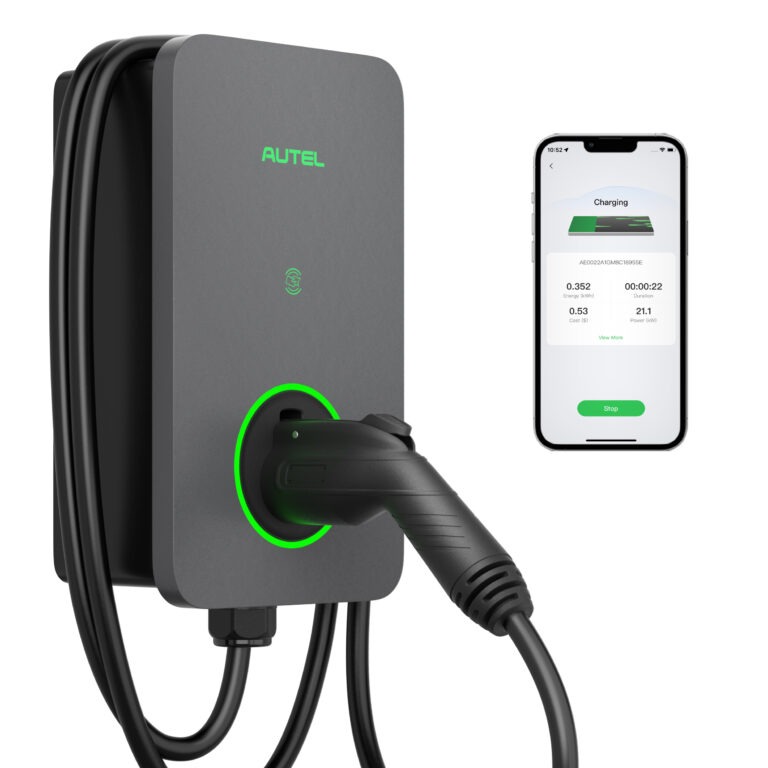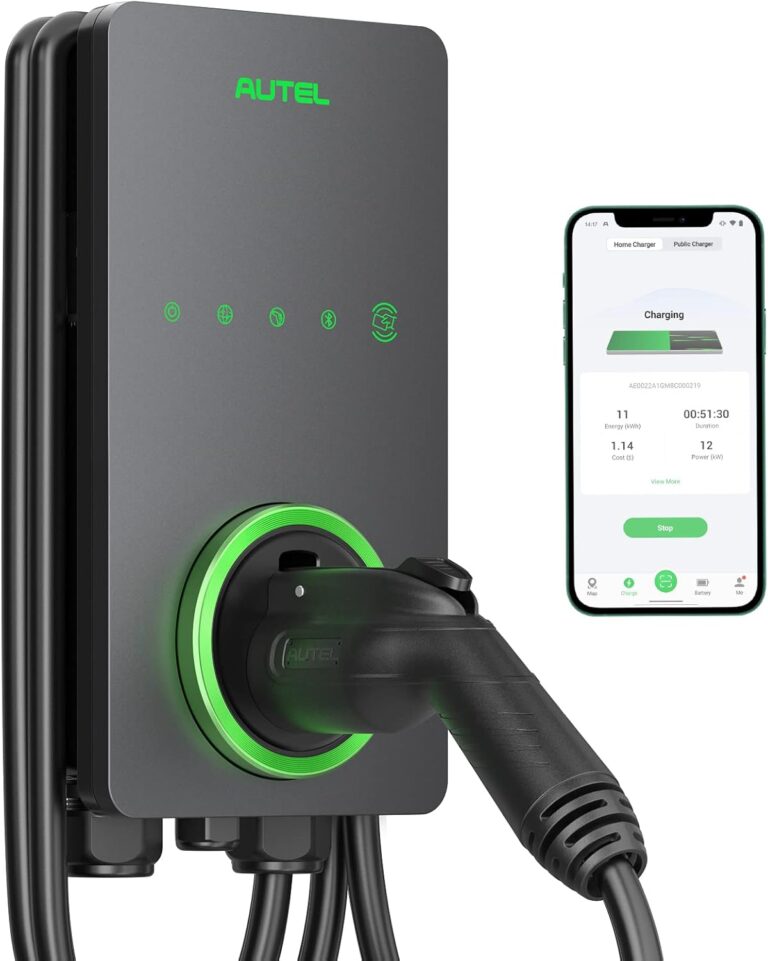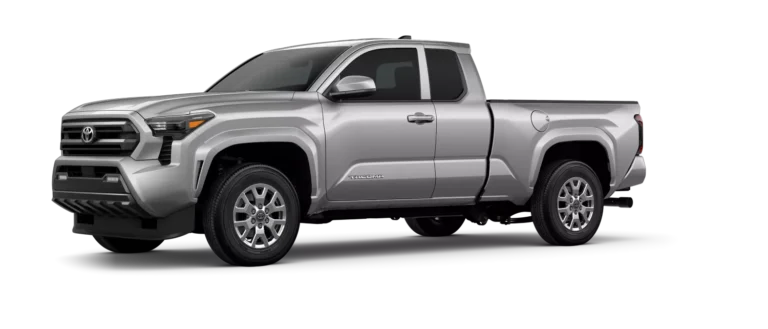
Audi A4 VIN Decoder and Options List
Audi A4 VIN Check and Audi A4 VIN Lookup
Where Do I Find My Audi A4 VIN?

You can find your Audi A4 VIN in the following locations:
Windshield (dashboard plate)
Look through the lower corner of the windshield on the driver’s side. The VIN is stamped on a small metal or plastic plate visible from outside the car.
Driver’s door jamb
Open the driver’s door and look at the door frame or B pillar. A white or silver label displays the VIN along with the vehicle’s weight ratings, build date, and paint code.
Vehicle documents
The VIN appears on official paperwork such as your registration, title, insurance documents, and sometimes the sales invoice or service records.
Engine bay or chassis stamp
On some Audi A4 models, the VIN is also stamped into the metal in the engine bay, often near the firewall or strut tower.
Ready To Check The Value Of Your Audi A4 Spec?
Stop undervaluing your Audi A4, and never overpay again!
Get an instant, FREE car valuation for your Audi A4. Check how options, features, and specifications affect resale value with Check Your Spec.
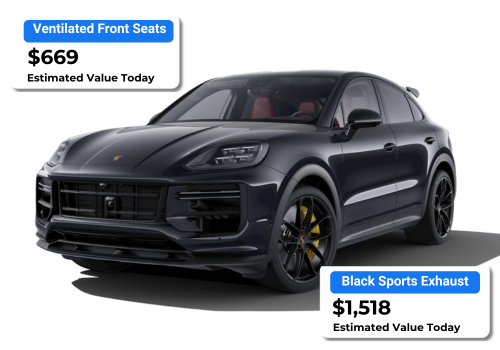
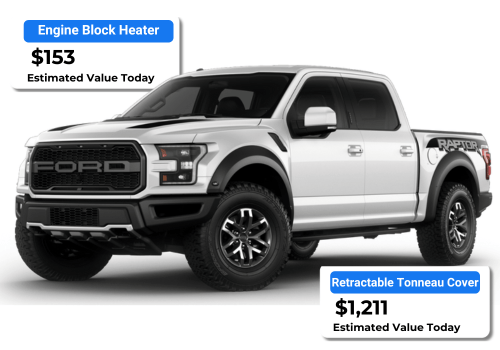
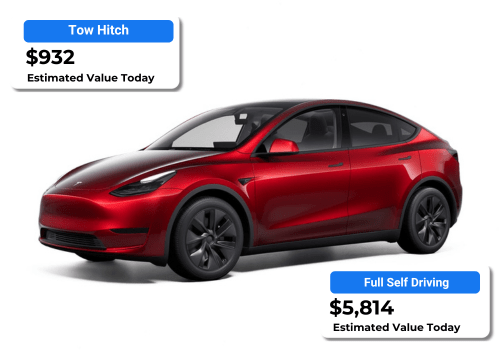
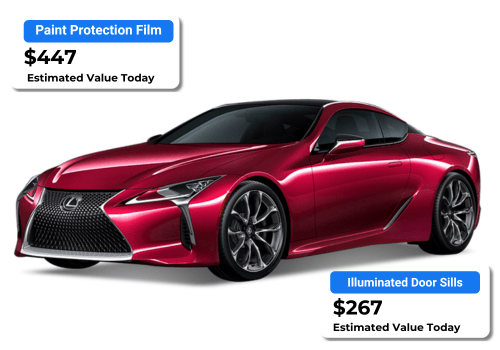
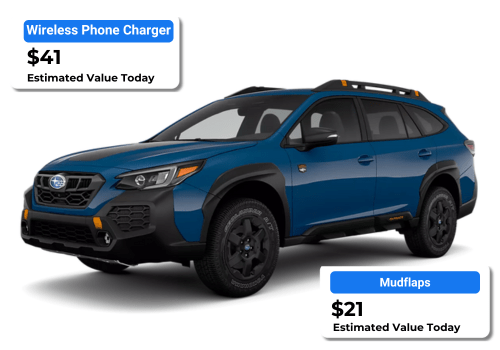
Article By: Dale Ogden
Dale Ogden is the founder of Check Your Spec and a recognized automotive expert with over 20 years of experience in vehicle valuations, forecasting, and asset management. A former Forecast Manager at CAP HPI – the UK’s leading vehicle valuation authority (think of them as the equivalent to Kelley Blue Book). He pioneered EV depreciation models now used by top manufacturers and has produced residual values for over 10,000 vehicles. Dale’s insights are trusted by automotive professionals, enthusiasts, and buyers worldwide.
Table of Contents
What Is My Audi A4 VIN?
Tucked into every Audi A4 is a 17 character VIN that identifies how it was made. The characters flag the factory of origin, the powertrain installed, the chosen trim, and the safety tech included.
Decode it and the full build sheet appears so you can confirm exactly how your car was configured. The result is a clear view of the equipment that makes your car yours.
Free Audi A4 VIN Decoder
What Are Audi A4 Option Codes?
Audi A4 option codes, also known as PR codes, are short three character combinations that describe every feature your car was fitted with when it left the factory. They cover everything from the suspension and brakes to the interior trim, paint color, and technology options.
You can find these codes on the vehicle data label, which is usually located inside the spare wheel well or printed in the service booklet. Each code represents a specific piece of equipment or configuration used during production.
For example
• 1BA represents standard suspension
• 4A3 means heated front seats
• 7X2 refers to rear parking sensors
• 9VK identifies the Bang & Olufsen sound system
• 8Q3 indicates automatic headlight range adjustment
Option codes help you confirm your car’s exact build specification, order the correct parts, and verify original equipment when buying or selling a used Audi A4. They provide a reliable record of how the vehicle was originally configured.
How To Find Your Audi A4 Option List
Your Audi A4 option list shows every feature, package, and system your car was fitted with at the factory. It includes details such as engine type, trim level, paint color, interior materials, and technology options. Having this list helps you confirm what was originally installed and makes it easier to order compatible parts or verify equipment when buying or selling.
There are a few ways to find your Audi A4 option list
Vehicle data label
The easiest way is to check the vehicle data label. It lists a series of three character codes known as PR codes that represent each feature. You can find this label inside the spare wheel well under the boot floor or printed inside the service booklet.
Audi dealer or service center
An Audi retailer can generate a factory build sheet using your VIN. This printout lists all equipment, option packages, and production details exactly as the car was built.
myAudi account or app
If you register your vehicle in the myAudi app or online portal, you may be able to view your car’s build summary. Some regions include an overview of major equipment such as audio systems, driver assistance packages, and wheel designs.
What Is An Audi A4 Build Sheet?
An Audi A4 build sheet is a factory record that lists exactly how your car was configured when it was built. It includes the complete specification, from the engine and transmission to the paint color, trim, and every option installed on the production line.
You can think of it as your car’s original blueprint. It confirms the equipment that came with your vehicle when new, rather than what may have been added or changed later.
The build sheet usually includes
• Factory option and package codes
• Engine, gearbox, and drivetrain information
• Exterior and interior specifications such as paint, upholstery, and trim
• Optional equipment like lighting, safety, and technology systems
• Production and assembly details
You can request a copy of your Audi A4 build sheet from an Audi dealer by providing your VIN. Some information may also appear in the myAudi app or on the vehicle data label inside the spare wheel well or service booklet.
Having the build sheet helps confirm authenticity, identify parts correctly, and understand the exact configuration of your car. It is different from the window sticker, which shows retail prices and marketing information rather than the full technical specification.
Audi A4 Engine Codes
Audi A4 engine codes identify the exact engine installed in your vehicle at the factory. Each code is a short combination of letters that defines the engine family, displacement, fuel type, and generation. These codes are important when ordering parts, checking compatibility, or verifying a car’s original specification.
Below are examples of common Audi A4 engine codes used across different model years and markets. Always confirm your specific code on the vehicle data label or build sheet, as engines can vary by year and region.
Petrol engines (TFSI and FSI)
• BWE – 2.0 TFSI 200 hp
• CAEB – 2.0 TFSI 211 hp
• CNCD – 1.8 TFSI 160 hp
• CPMA – 2.0 TFSI 220 hp
• CVKB – 2.0 TFSI 190 hp (B9 generation)
• CYMC – 2.0 TFSI 252 hp (B9)
• DLZA – 2.0 TFSI mild hybrid 204 hp (B9.5 facelift)
• DNPA – 2.0 TFSI mild hybrid 265 hp (B9.5 facelift)
• CEUA – 3.0 TFSI supercharged 333 hp (S4)
• DAZA – 2.5 TFSI 400 hp (RS3 derived engines in special editions)
Diesel engines (TDI)
• BRD – 2.0 TDI 170 hp
• CAGA – 2.0 TDI 143 hp
• CAHA – 2.0 TDI 170 hp
• CJCB – 2.0 TDI 150 hp (B8 generation)
• CNHA – 2.0 TDI 190 hp (B9)
• DETA – 2.0 TDI EVO 163 hp (B9.5 facelift)
• DEUA – 2.0 TDI EVO 204 hp (B9.5)
• CDUC – 3.0 TDI 245 hp (A4 and A4 allroad)
• DCPC – 3.0 TDI 272 hp (B9 allroad and S4 diesel)
You can find the engine code on the vehicle data label in the spare wheel well, inside the service booklet, or stamped on the engine block near the front or timing cover. Always use the exact code when ordering engine parts, as even small variations can affect compatibility.
Audi A4 Transmission Codes
Transmission codes identify the specific gearbox fitted to your Audi A4 at the factory. Each code represents the type of transmission, its gear count, and whether the car is front wheel drive or quattro all wheel drive. These codes are essential for confirming compatibility when servicing or replacing components.
Below are examples of common Audi A4 transmission codes used across different generations. Always verify your exact code using the vehicle data label or build sheet, as configurations vary by engine and market.
Manual transmissions
• GVE – 6 speed manual for 1.8 and 2.0 TFSI engines
• GVD – 6 speed manual for 2.0 TDI models
• MMT – 6 speed manual for quattro versions
• NYX – 6 speed manual for 3.0 TDI engines
S tronic and multitronic transmissions
• LUK – 7 speed S tronic dual clutch gearbox for 2.0 TFSI and 2.0 TDI
• LPC – 7 speed S tronic wet clutch used in B9 generation A4
• LHX – 7 speed S tronic with quattro all wheel drive
• LHL – 7 speed S tronic DQ381 used on mild hybrid 2.0 TFSI engines
• MUU – Multitronic CVT used in earlier front wheel drive A4 models
Tiptronic automatic transmissions
• HKG – 8 speed Tiptronic for 3.0 TDI engines (B8 and B9 allroad)
• NFA – 8 speed Tiptronic for 3.0 TFSI and 3.0 TDI quattro
• NFB – 8 speed Tiptronic for S4 and allroad variants
• NKT – 8 speed Tiptronic used in B9 2.0 TFSI quattro
You can find your transmission code on the vehicle data label in the spare wheel well or service booklet, and also stamped on the gearbox casing. Always match the code exactly before ordering parts or fluids, as similar gearboxes may have different ratios, sensors, or control units depending on engine and year.
Audi A4 Paint Codes
Below is a complete list of Audi A4 factory paint codes and color names used across multiple generations, including solid, metallic, and pearl finishes.
These codes identify the exact color applied to your vehicle during production and are helpful when confirming authenticity or matching paint for repair or restoration. You can find your specific paint code on the vehicle data label inside the spare wheel well or printed in the service booklet.
LA3H: Salsa Red – Solid finish seen on earlier B6 models.
LA3S: Amaryllis Red Metallic – Deep red tone used on select trims.
LA7W: Reflex Silver Metallic – A timeless metallic silver used across multiple A4 generations.
LA9V: Brilliant Black – Classic solid black widely used on base and S line models.
LB5N: Kingfisher Blue Metallic – Distinctive mid-blue shade available on early models.
LB7Z: Satin Silver Metallic – Subtle metallic tone found on B6 and B7 A4s.
LC5M: Moonlight Blue Pearl Effect – Deep pearl blue with a luxurious tone, popular in B8 and B9.
LC7V: Atlas Grey Metallic – Mid-grey finish used through several early A4 generations.
LD7Y: Quartz Grey Metallic – Versatile grey metallic that replaced older Atlas shades.
LH7W: Akoya Silver Metallic – Light silver metallic with a warm undertone.
LM7W: Silver Metallic – Standard silver finish seen across many A4 trims.
LN5Y: Navara Blue Metallic – Rich navy blue introduced in newer B9 models.
LP5X: Sepang Blue Pearl Effect – Sporty pearl blue found on S4 and RS4 variants.
LR7L: Ice Silver Metallic – Light silver metallic used through B7 to B9 generations.
LS3T: Crimson Red Pearl Effect – Vibrant red pearl finish used on select trims.
LS9R: Glacier White Metallic – Bright white metallic common on modern A4s.
LX1X: Manhattan Grey Metallic – Modern grey metallic available on recent B9.5 versions.
LX5Q: Scuba Blue Metallic – Medium blue metallic from the B8 and early B9 lineups.
LX5R: Moonlight Blue Metallic – Slightly darker shade of pearl blue used on premium trims.
LX7R: Monsoon Grey Metallic – Popular neutral grey metallic from the B8 era.
LX7W: Ice Silver Metallic – Light silver tone overlapping with LR7L on select years.
LX7Z: Dolomite Grey Metallic – Elegant dark grey metallic found on B9 variants.
LX8X: Navarra Blue Metallic – Deep blue metallic used on higher-spec B9 models.
LX9X: Mythos Black Metallic – Glossy metallic black common on S line and RS trims.
LY1P: Dakota Grey Metallic – Subtle warm grey metallic used across B8 and B9.
LY3U: Tango Red Metallic – Bright, high-impact red used on S line and sport trims.
LY7C: Nardo Grey – Flat grey finish known for its modern performance look.
LY7G: Quartz Grey Metallic – Popular neutral metallic grey used across multiple model years.
LY7H: Akoya Silver Metallic – Light silver shade shared across A4 and A6 platforms.
LY7J: Avus Silver Metallic – Iconic bright silver used on higher-end variants.
LY9B: Brilliant Black – Deep solid black finish, widely available on all trims.
LY9C: Ibis White – Pure solid white, standard across most modern A4 models.
LY9T: Mythos Black Metallic – Deep metallic black with fine reflective finish.
LZ3M: Garnet Red Pearl Effect – Dark red pearl tone used on limited editions.
LZ3N: Ruby Red Pearl Effect – Jewel-like red pearl with rich depth and gloss.
LZ3S: Jaipur Red Pearl Effect – Rare deep red metallic on select early models.
LZ5C: Mauritius Blue Pearl Effect – Deep pearl blue popular in B7 and B8.
LZ7H: Meteor Grey Pearl Effect – Grey pearl finish offering subtle depth and warmth.
LZ7L: Lava Grey Pearl Effect – Dark grey metallic with bronze undertones.
LZ7S: Daytona Grey Pearl Effect – Signature RS and S line color with a sporty metallic tone.
LZ9Y: Phantom Black Pearl Effect – Classic pearl black finish available across all generations.
Audi A4 Exterior Trim Codes
Exterior trim codes identify the styling details, body accents, and optional exterior features fitted to your Audi A4 at the factory.
These codes cover everything from mirror finishes and roof rails to black styling packages and body colored elements. They are especially useful when replacing trim components or confirming factory option packages on S line and sport models.
Below are examples of exterior trim codes used across various Audi A4 generations. Always verify the exact codes using the vehicle data label or build sheet, as equipment can vary by market and model year.
EK: Black styling package or blackout exterior trim, often seen on S line and Black Edition models.
4ZP: High gloss black exterior trim around windows and grille.
4ZB: Bright chrome exterior trim package for base and luxury trims.
5J2: Rear spoiler painted in body color (S line and sport models).
5J4: Rear spoiler in carbon fiber or black finish (RS and special editions).
6FA: Body-colored exterior mirror housings.
6FJ: Gloss black exterior mirrors, common on Black Edition variants.
6XE: Electrically adjustable and heated exterior mirrors.
6XL: Electrically adjustable, heated, and power folding mirrors with memory function.
6XD: Electrically adjustable mirrors without folding function.
6XK: Carbon fiber exterior mirrors on RS models.
2Z0: Without nameplate set (base trim).
2Z7: Model designation badges on front and rear deleted (Audi exclusive option).
3S1: Roof rails in black (A4 allroad and S line).
3S2: Roof rails in aluminum silver (standard on allroad and some luxury trims).
PC: Special color or pearlescent paint finish paired with exterior trim packages.
PQD: S line exterior package with sport bumpers and side skirts.
PQA: Standard exterior trim with chrome detailing.
PQA1: Titanium black exterior styling package.
Audi A4 Wheel Codes
Wheel codes identify the exact wheel design, size, and finish that your Audi A4 was equipped with at the factory. These codes are essential when confirming original fitment, ordering replacement wheels, or matching tire and brake setups correctly. Wheel options vary widely between standard, S line, allroad, and RS variants.
Below are examples of wheel codes and common specifications found across multiple Audi A4 generations. Always verify fitment using your VIN, build sheet, or vehicle data label, as offsets and brake clearances can differ by trim and model year.
8W9 601 025 AN: 18×8.0J alloy wheel – 10 spoke dynamic design, used on A4 B9 Premium Plus.
8W0 601 025 AC: 17×7.5J alloy wheel – multi-spoke design, standard on base trims.
8W0 601 025 AJ: 19×8.5J alloy wheel – 5 V spoke design, S line and sport models.
8W0 601 025 BE: 19×8.5J alloy wheel – Audi Sport 5 arm rotor design, RS and special editions.
8W0 601 025 BK: 20×9.0J alloy wheel – exclusive to A4 allroad and S4 performance variants.
8W0 601 025 BM: 18×8.0J alloy wheel – twin spoke star design, mid range trim level.
8W0 601 025 BS: 17×7.5J alloy wheel – 10 spoke turbine design.
8K0 601 025 CF: 18×8.0J alloy wheel – 15 spoke design from B8 A4.
8K0 601 025 DN: 19×8.5J alloy wheel – 5 segment spoke design, optional upgrade on S line.
8T0 601 025 AQ: 20×9.0J alloy wheel – 5 twin spoke design used on RS4 Avant.
8H0 601 025 AN: 17×7.5J alloy wheel – multi spoke from early B7 generation.
8E0 601 025 AE: 16×7.0J alloy wheel – standard fitment for B6 A4 sedans.
Winter and steel wheel options also exist, typically in 16 or 17 inch sizes, with simpler codes and designs. Always confirm the center bore, bolt pattern, and TPMS compatibility before replacing or upgrading wheels. Matching the original wheel code ensures proper fitment, balance, and factory ride quality.
Audi A4 Lighting Codes
Lighting codes identify the type of headlamps, taillamps, and exterior lighting systems fitted to your Audi A4 at the factory. These codes are useful for confirming whether your car has halogen, xenon, or LED systems and for ordering replacement assemblies that match your original configuration. Lighting options can vary significantly between trims, packages, and production years.
Below are examples of factory lighting codes commonly found across different Audi A4 generations. Always verify the exact specification using your vehicle data label or build sheet.
8BP: Bi Xenon headlights with dynamic curve lighting.
8IT: LED headlights with daytime running light signature.
8IS: Matrix LED headlights with dynamic turn signals.
8Q3: Automatic headlight range adjustment dynamic self leveling system.
8Q5: Headlight range control manual adjustment.
8IG: Xenon plus headlights with LED daytime running lights.
8X1: Headlight washer system with pop up nozzles.
8K1: Separate daytime running lights.
8G1: High beam assist automatic switching between low and high beam.
8SM: LED rear combination lamps with dynamic indicators.
8SP: LED rear lights with standard indicator operation.
8SK: Standard halogen rear combination lamps.
8T8: Adaptive light system integrated with cornering function.
8WB: Front fog lights integrated into lower bumper.
8WH: Static cornering light function through fog lamps.
8SA: Without front fog lights base configuration.
8W3: Automatic headlight control with coming home and leaving home function.
8Z5: Not for hot country markets (reduced intensity adaptation).
4L6: Auto dimming interior rearview mirror with light sensor integration.
Audi A4 Interior Option Codes
Interior option codes identify the seating materials, comfort features, trim finishes, and in-car systems fitted to your Audi A4 when it left the factory. These codes help confirm which upholstery, steering wheel, and convenience options were originally installed; useful for verifying authenticity or matching replacement parts accurately.
Below are examples of interior option codes used across various Audi A4 generations. Availability can vary by model year, trim, and market.
Seating
4A3: Heated front seats
4A4: Heated front and rear seats
3PN: Power driver seat with memory function
N1F: Fine Nappa leather upholstery
N7U: Alcantara and leather combination
N5W: Milano leather seat material
Q1A: Standard front seats
Q1G: Sports front seats with enhanced side bolsters
7P1: Power lumbar support adjustment front
4D3: Seat ventilation front (model dependent)
Steering Wheel
1XW: Leather steering wheel 4-spoke design
1XX: Leather steering wheel 3-spoke multifunction with shift paddles
2PF: Flat bottom sport steering wheel (S line and RS models)
2C7: Steering column manually adjustable for height and reach
2C8: Power adjustable steering column with memory
Trim and Inlays
5MA: Decorative inlays Aluminum Ellipse silver
5MB: Decorative inlays Piano Black
5MK: Inlays Brushed Aluminum
5TL: Inlays Matte Carbon Atlas (S and RS variants)
5MZ: Oak Natural Grey or Fine Grain Ash inlays (luxury trims)
Climate Control and Comfort
9AK: Automatic 3 zone climate control
9AQ: Dual zone automatic climate control
9M9: Auxiliary heater with timer (cold weather package)
4L6: Auto dimming interior rearview mirror
6NJ: Black cloth headliner (S line and sport trims)
6E3: Front center armrest adjustable
Audio and Interior Tech
9VD: Audi Sound System
9VS: Bang and Olufsen Premium 3D Sound System
9VC: Sound package branded with subwoofer
QV3: Digital TV reception (market dependent)
ER1: Regional code for ECE radio frequency compliance
Audi A4 Safety and Driver Assistance Codes
Safety and driver assistance codes identify the systems that help protect occupants and assist the driver in everyday and dynamic driving situations. These codes specify equipment such as stability control, adaptive cruise, parking sensors, and camera-based safety systems. Confirming these codes can help verify if your A4 includes optional driver assistance packages or advanced collision prevention features.
Below are examples of safety and driver assistance codes used across multiple Audi A4 generations. Availability varies depending on model year, trim level, and market region.
Driver Assistance Systems
PCF: Assistance package with lane assist and adaptive cruise control
8T8: Adaptive cruise control with follow to stop function
8T6: Cruise control system standard version
7Y1: Audi side assist with blind spot monitoring
QK1: Lane departure warning camera based system
QR9: Traffic sign recognition with camera input
UH2: Hill hold assist
UH1: Hill descent assist for allroad models
7X2: Park distance control front and rear
7X5: Park assist with automatic steering
KA2: Rear view camera system
KA6: 360 degree surround view camera
7L8: Start stop system with regenerative braking support
Safety Systems
1AT: Electronic stability program (ESP) with traction control
1AS: Electronic stabilization control basic version
4UF: Front airbags with passenger airbag deactivation
4X3: Side airbags front and rear with head airbag system
3B7: Child seat anchor points ISOFIX and top tether
7K6: Tire pressure monitoring active system
7K1: Tire pressure warning passive system
4H5: Child safety locks on rear doors
1N3: Speed sensitive power steering system
1N8: Dynamic steering integrated with Drive Select
4N7: Comfort head restraints front
1LH: Brake system with larger discs for sport models
Audi A4 Infotainment and Communication Codes
Infotainment and communication codes identify the technology and connectivity systems installed in your Audi A4 at the factory. These cover everything from navigation and smartphone integration to digital instrument clusters and premium audio packages. Knowing these codes helps confirm whether your car includes MMI Navigation Plus, Audi connect services, or specific sound systems tied to certain trim levels.
Below are examples of infotainment and communication codes used across various Audi A4 generations. Equipment may differ based on year, region, and trim package.
Navigation and Connectivity
7UG: MMI Navigation Plus with MMI touch and handwriting recognition
7UF: MMI Radio Plus with color display
7T6: MMI Navigation with hard drive storage
7T2: Navigation system basic version
7X8: Parking system with visual display
9S9: Virtual Cockpit with 12.3 inch digital instrument cluster
9S8: Analog instrument cluster with color driver information system
EL3: Audi connect service with online traffic and map updates
EL4: Audi connect emergency call and assistance
EL9: Audi connect with WiFi hotspot function
BT: Bluetooth hands free connection
CPAA: Apple CarPlay and Android Auto integration
8DY: Digital radio reception (DAB)
QV3: Digital TV reception (market dependent)
QV9: Online media streaming function
Sound and Multimedia
9VD: Audi Sound System with 10 speakers
9VS: Bang and Olufsen Premium 3D Sound System
9VC: Sound package branded or enhanced
9VD: Basic sound system for standard trims
9VG: Audi Sound System with subwoofer
8RM: Speaker installation standard version
8RY: Speaker installation for premium audio
ER1: Regional code for ECE radio settings
ER4: Regional code for North American market frequencies
Display and Control Systems
9Q8: Multi color ambient lighting linked to MMI themes
9Q7: Ambient interior lighting standard
8YQ: MMI touch response interface with haptic feedback
8YN: Basic MMI display without touch function
7HE: Leather package including MMI control panel trim
Audi A4 Common Option Codes
Common option codes identify the standard and optional equipment fitted to your Audi A4 at the factory. These three character alphanumeric codes, known as PR codes, are printed on the vehicle data label and describe items ranging from mechanical components to comfort and convenience features. Recognizing these codes helps confirm authenticity, verify specifications, and order correct replacement parts.
Below is a list of common Audi A4 option codes used across multiple generations and trims. Availability may vary depending on model year and region.
0TD: Floor mats in front and rear
0VF: Owner’s manual and documentation package
1SA: Without underbody protection
1X1: Four wheel drive quattro system
2H1: Drive select with multiple driving modes
2WA: Without additional tires
3FA: Without roof insert sunroof delete
3FU: Electric tilt and slide glass sunroof
3S2: Roof rails in aluminum silver allroad models
4E0: Without servo closing for tailgate or trunk lid
4GF: Heat insulating glass
4KC: Side and rear windows heat insulating glass
4K4: Central locking system
4X1: Side airbags front
5D1: Carrier frequency 433.92 to 434.42 MHz (keyless system)
5J0: Without rear spoiler
6XD: Electrically adjustable exterior mirrors
6XE: Electrically adjustable and heated mirrors
6XL: Electrically adjustable, heated, and folding mirrors with memory
7K1: Tire pressure monitoring system
7K6: Active tire pressure monitoring system
7L8: Start stop system with regenerative braking
7X2: Park distance control front and rear
7X5: Park assist with automatic steering
8G1: High beam assist
8Q3: Automatic headlight range adjustment dynamic
8SA: Without front fog lights
8Y1: Two tone horn
9AK: Three zone automatic climate control
9T1: Heated washer nozzles in front
9VD: Audi Sound System
9VS: Bang and Olufsen Premium Sound System
F0A: No special purpose vehicle standard equipment
J0B: Battery 380 A 68 Ah
L0L: Left hand drive configuration
NM1: Engine cover
NY0: Standard battery or generator capacity
QJ1: Chrome trim package
QZ7: Power steering standard configuration
TL0: Base engine designation
U0A: Instrument insert standard version
VC0: Without remote controlled garage door opener
VF0: Standard pedal cluster
V0A: Tires without specification of brand
0FA: Standard manufacturing sequence
0JB: Weight category front axle weight range 2
0Y1: Standard climatic zones
1C1: Antifreeze up to minus 25 degrees Celsius
1G8: Breakdown set with tire repair kit
1PA: Standard wheel bolts
1S1: On board tool kit
2P0: Without loading edge protection
3B4: Child seat anchor ISOFIX
4I2: Central locking system with remote control
5RQ: Right exterior mirror convex
5SG: Left exterior mirror flat
6Y2: Top speed limiter
7A0: Without alarm system
7E6: Electric auxiliary air heater
8FA: Without second battery
8WA: Without front fog lights
8Z5: Not for hot country markets
9JA: Without smoker package
9Q1: Multifunction display
AV1: Driving on the right configuration
B0A: Component parts set without country specific requirements
GP0: Without driving strategy setting
These codes represent the most frequently appearing options across A4 models from the B6 through B9.5 generations.
How Audi A4 Options Affect Value
When it comes to the Audi A4, factory options play a significant role in determining resale value, desirability, and how well the car aligns with what buyers are looking for in the used market. The build sheet or option list linked to your VIN is more than just a technical record; it’s a guide to understanding how your specific configuration stands out.
Performance and drivetrain options
Models equipped with the quattro all wheel drive system, higher output TFSI engines, or S line performance packages generally command stronger resale values. These options not only improve driving dynamics but also appeal to buyers seeking premium capability, especially in colder or all weather markets.
Exterior and wheel packages
Upgraded alloy wheels, S line body styling, and metallic paint finishes can raise visual appeal and make a noticeable difference in resale value. Desirable colors such as Mythos Black, Daytona Grey, and Navarra Blue tend to sell faster, while rare or discontinued colors can attract collectors or enthusiasts.
Interior and comfort features
Leather upholstery, heated and ventilated seating, and upgraded trim finishes help differentiate premium trims from standard models. Features like power memory seats, ambient lighting, and multi zone climate control make a car feel newer and better maintained over time.
Technology and infotainment
Audi’s MMI Navigation Plus, Virtual Cockpit, and Bang & Olufsen sound systems have proven to add value because they enhance the overall ownership experience. Buyers often prioritize cars with these systems preinstalled over similar models without them.
Safety and driver assistance systems
Advanced safety technology such as adaptive cruise control, lane assist, and 360 degree cameras contribute not only to comfort but also to long term resale strength. Vehicles with complete assistance packages tend to sell at a premium compared to base configurations.
Paint and special editions
Certain colors and limited edition packages, like the Black Edition or S line Competition, can influence market value positively due to exclusivity and design appeal. Maintaining original paint and trim condition can also make a measurable difference when selling or trading in.
Audi A4 FAQ
Can I find my Audi A4’s full build sheet using the VIN?
Does the VIN show which engine or transmission my A4 has?
Will the VIN tell me if my A4 has quattro all wheel drive?
Do factory options really affect the value of an Audi A4?
Unlock accurate valuations for your car’s features in seconds – find out what your options are worth today and in the future.



